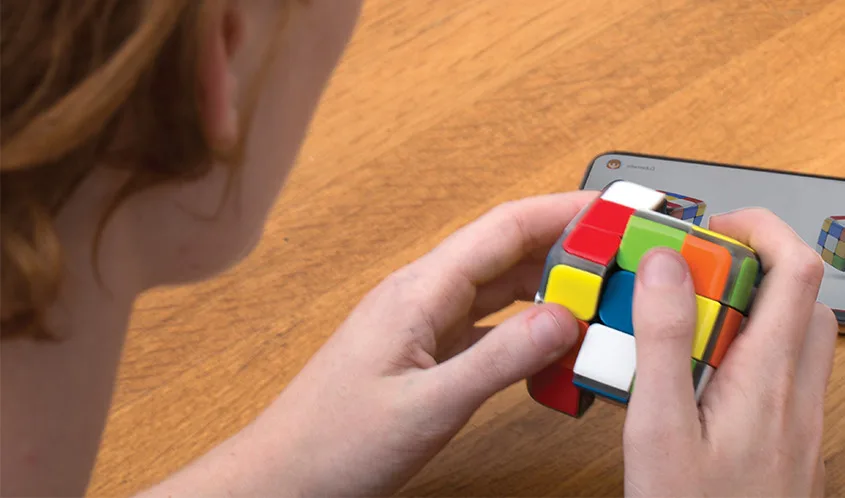by WENDY SMOLEN, founder, wendysmolen.com
Israeli startup Particula recently re-imagined the Rubik’s Cube, originally created in 1974 and considered one of the most popular toys ever made. Like Rubik’s, the GoCube challenges players to configure 54 colored blocks on a cube. The difference is that GoCube uses technology to enable players to compete around the world, offers instructions and helpful hints, and, for advanced gamers, has a timer and move analysis. The “aha!” moment came when a group of engineers idly playing with an original Rubik’s Cube wondered why they couldn’t play together. Research, development, invention, and fundraising ensued. The GoCube Kickstarter campaign raised close to $850,000, after an initial ask of $25,000. Is the GoCube just a copycat off the Rubik’s Cube with new technology features or is it a brand new concept? Does it really matter?
Know this: After every good idea, there’s always another one. It doesn’t matter where you start—it matters where you end up. Some of the best products are iterations, mashups, or new platforms. Kids like Twister. Kids like sprinklers. How about Twister with water? Kids like Star Wars. Kids like LEGO. Truly, a match made in heaven. To bring your “aha!” toy idea to fruition, you’ll need passion, patience, and a plan.
1. DEFINE IT
Establish a clear value proposition. In a sentence or three, write down what it does, who it’s for, and how it is unique. Be as specific as you can. This will give you a concise focus when you’re talking to others, looking at competition, and talking to yourself (which you’ll be doing a lot). It will also help you establish an authentic voice for your product.
2. RESEARCH THE COMPETITION
Who’s doing anything similar in concept? How is your idea different? How are they selling, packaging, or displaying it? Are there patents for the competition? Do you need one for your idea? If you’re at Fall Toy Preview in Dallas, walk the aisles. Get a sense of what’s hot. Shop the stores where you’d envision your product. Talk to buyers. Get market data. Arm yourself with as much concrete information as possible.
3. DREAM SOME MORE
Don’t fixate on your original plan. Push the envelope. Failing fast and reiterating are key steps in successful innovation. Are there two or three good products that have features you admire? Can you combine them? Look at what’s hot, not just in your category, but even in other industries. What makes Glossier successful for millennials? How did Warby Parker redefine eyewear? These may seem out of context to you, but both companies disrupted existing categories in unique ways. Keep thinking “Twister” and “water.” What would a new connection look like?
4. GET ADVICE
Even the most seasoned toy inventor talks to experts. Run your idea by educators, researchers, gamers, tech people, lawyers, parents, kids, and the Consumer Product Safety Commission. The last thing you want to do is have an idea that requires materials that aren’t safe for your target age.
5. BRAINSTORM
After doing these first four steps, you may think you know it all, but you’re still singing to the choir. Get in the mindset of the parent and/or the child. Why would they choose your product over others? Talk to trusted peers, friends, kids, potential partners, or inventors. They’ll help you iterate even further.
6. GET REAL
Talk is cheap; prototyping isn’t. It takes deep pockets to build a product. Consider whether you want to start a Kickstarter campaign or seek major investors. Do you need partners? Do you want to own your product from start to finish (manufacturing to storage to shipping) or license it and let someone else handle all the details? Re-read your facts and figures above. Believe in your dream. Then go for it.
[author] [author_image timthumb=’on’]https://toybook.com/wp-content/uploads/2018/02/wendysmolen.png[/author_image] [author_info]Wendy Smolen has spent more than 20 years playing in the toy industry. She cofounded Sandbox Summit, an idea forum focused on the intersection of play, learning, and technology. Currently, she works with companies and organizations to create playful solutions that engage kids and families in innovative and impactful ways.[/author_info] [/author]

